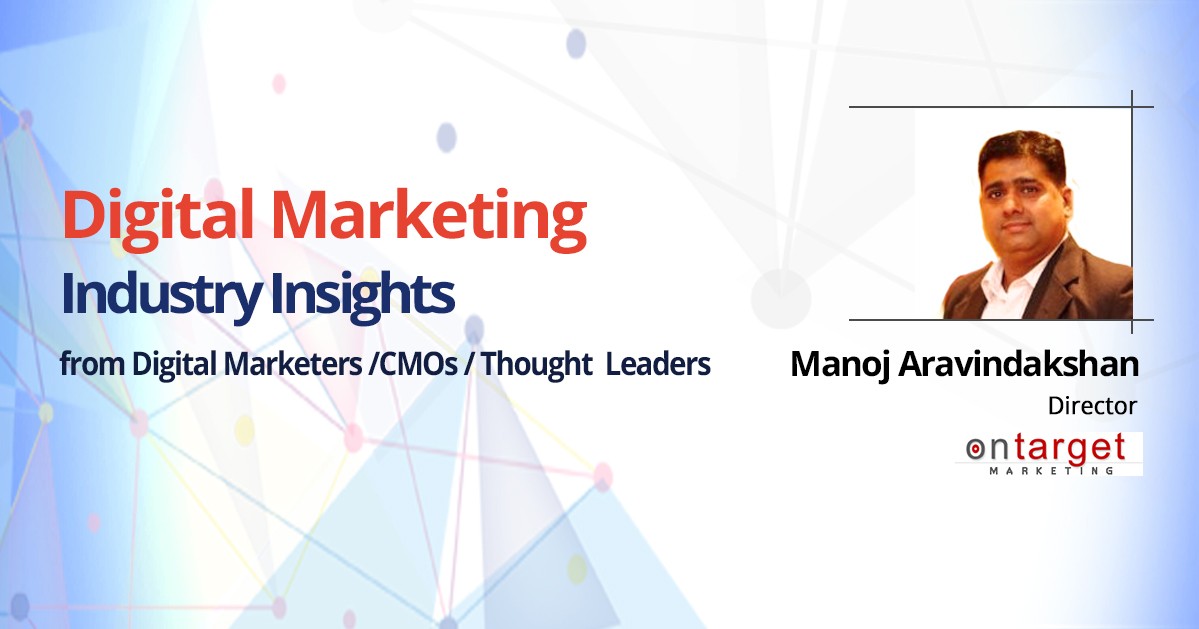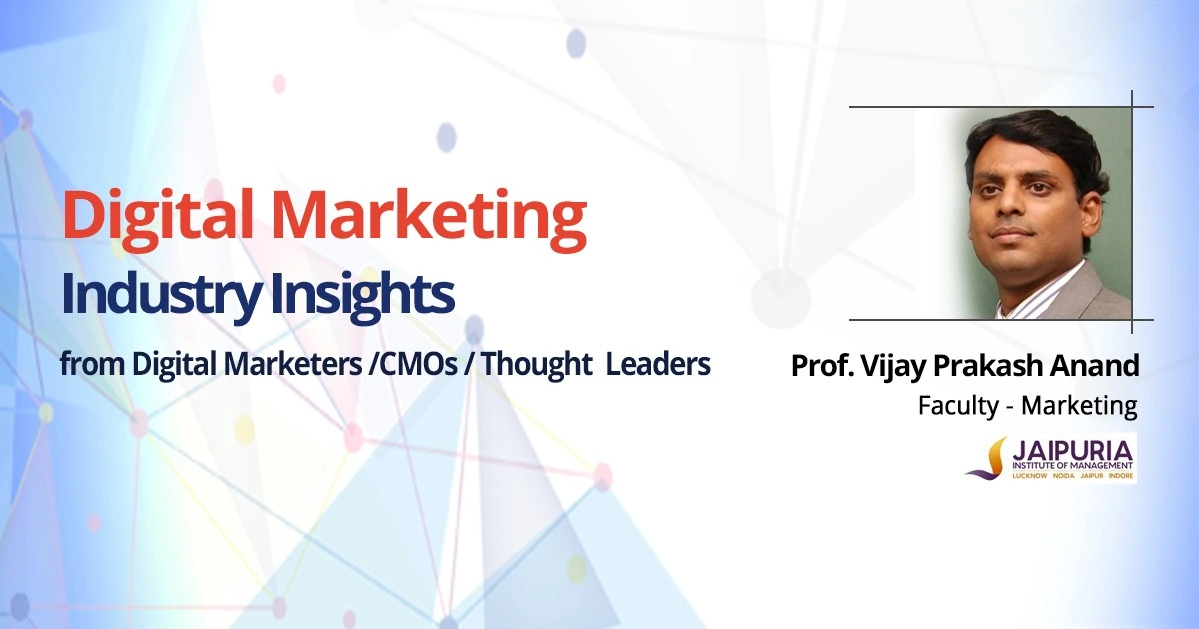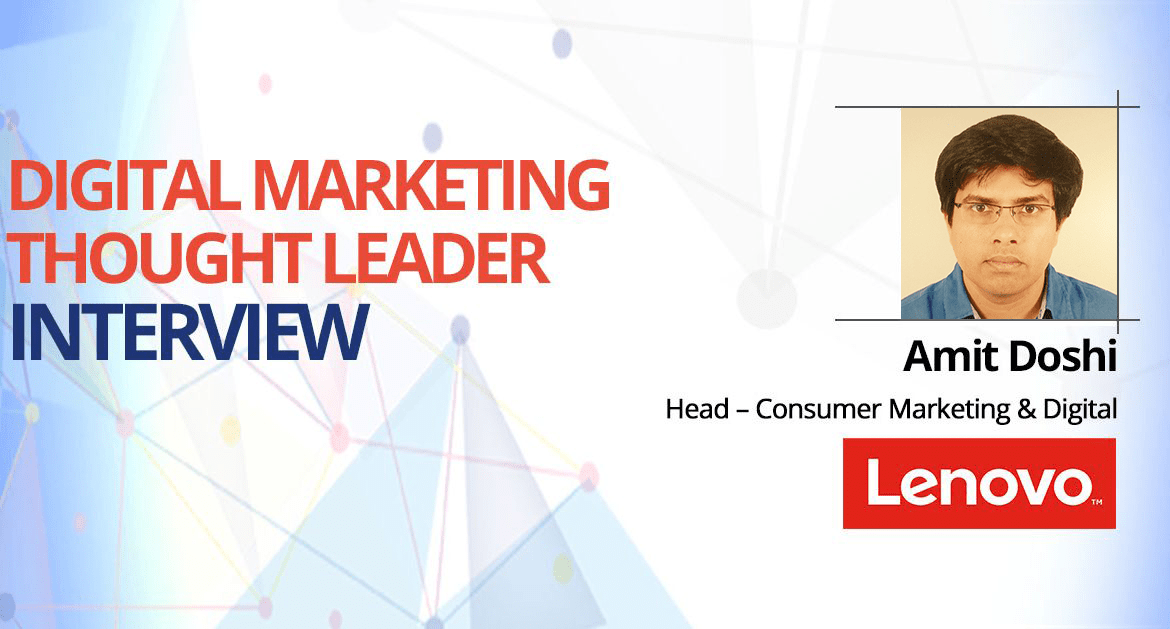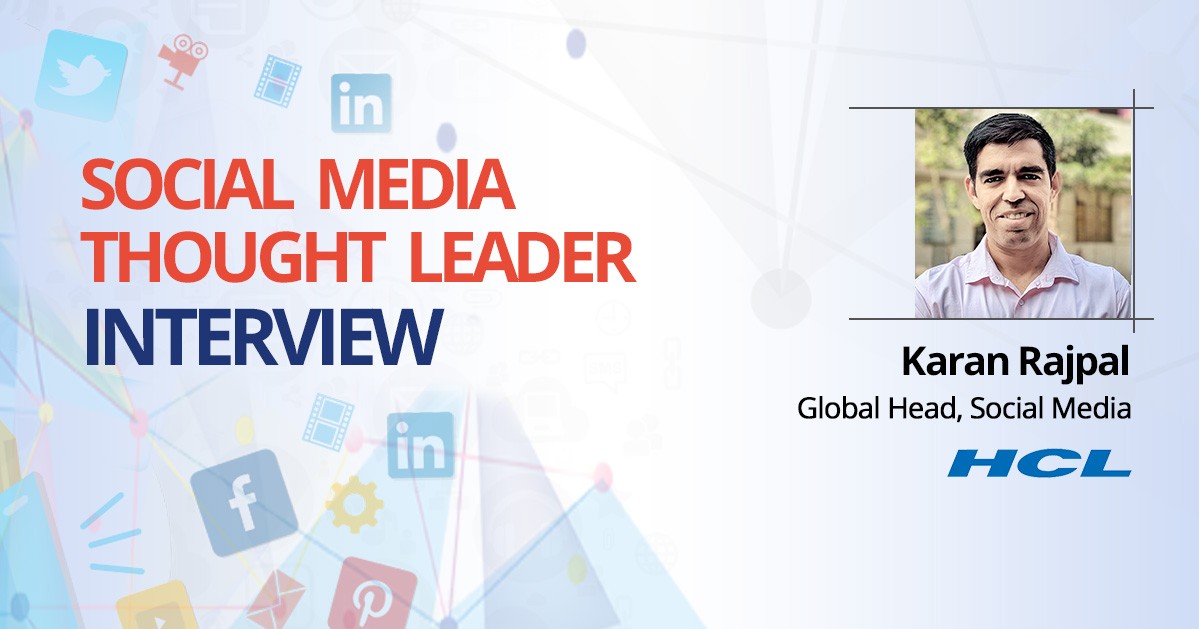Manoj has been passionate about media and marketing right from his school days. So, while he ended up doing mechanical engineering, he moved into technical and trade publishing very early in his professional life in Mumbai.
As they say, one thing leads to another and he soon found an opportunity with a leading B2B media company Global Sources in their content/editorial team in Manila, Philippines.
This was 1998 and quite early days in terms of digital media and publishing. It’s rather difficult to believe now that this was the pre-Google era (in fact, Google was born in September 1998?) — so in many ways, he has witnessed and experienced the ‘revolution’ in the digital media space.
Global Sources was a B2B sourcing platform and a market leader in Asia for a long time until Alibaba (which started out as a B2B sourcing site as well) took over that leadership position in the first decade of the new millennium.
As one of the earliest players in the space in Asia, Global Sources offered some great learning opportunities- right from content creation for an online audience to all facets of digital marketing for traffic acquisition and lead generation purposes.
Having handled two different portals targeted at two distinct audiences in the Electronics domain as their Online Managing Editor, responsible for their content and traffic, he moved to Hong Kong to lead product development for a pilot messaging product that aimed to digitalise and simplify the supplier sourcing and vendor finalization process for large global retailers.
While ‘digital transformation’ is in vogue now, he realized very quickly that he was probably a bit ahead of the curve in terms of market readiness for adoption and hence commercial viability. The pilot project gave some great insights into the challenges organisations face with driving change.
Upon killing the messaging product, he took responsibility for product management of Global Sources’ trade show portal as well as handling digital initiatives for the company’s own trade shows launched in China.
The challenge of getting high-volume importers from around the world to register to attend the shows and then getting them to actually travel to China to be physically present was quite an interesting one for him.
This end-to-end experience in digital media and marketing with that Nasdaq-listed company was immensely helpful when Manoj ventured out with his own content & digital marketing company, based out of Singapore and serving clients from around the world (including companies in India).
According to you, what are the advantages of conventional marketing over Digital Marketing? Do you think that Digital Marketing is a threat to the future of conventional marketing?
Manoj Aravindakshan: I’m not sure if we can have a watertight separation between conventional marketing and digital marketing. If we understand the purpose of marketing as reaching, influencing and driving the desired action by one’s target market, it’ll be clear that we need to use different approaches for different audiences, some of which will be ‘conventional’ methods.
For example, let’s consider the objective is to reach and influence C-level executives. It may be more appropriate in this case to invest more money in traditional PR and/or advertising in prestigious print publications, rather than relying entirely on something like say, a Google Adwords campaign, or even a LinkedIn campaign.
There is a place for both traditional marketing channels as well as digital marketing channels. In fact, I tend to look at marketing needs from something I call an “8M Marketing Matrix”.
The 8M actually stands for Mission, Market, Method, Medium, Message, Moment, Money (budget) & Metrics. Decide which of these parameters are fixed and formulate your strategies by selecting the right approach for the variables.
Personally, I think there will be increasing convergence between traditional and digital marketing and we’ll keep hearing more and more of ‘integrated marketing’ or ‘omnichannel’ marketing going forward.
To answer the second part of your question, as to whether digital marketing is a threat to the future of conventional marketing- I think conventional marketing has to undoubtedly adapt and change to keep up with the rising expectations and ‘disruptions’ that digital technology has brought into marketing.
Digital Marketing has taken measurability of marketing and various aspects of user experience such as personalization to a whole new level. Marketers expect other channels to be able to do that as well.
So trade show organizers, for example, will have to convince marketers on the number and quality of visitors (“marketing qualified leads”) that investing in a trade show booth will deliver.
Share about your 3 favourite Integrated Marketing case studies. What did you like most about them?
Manoj Aravindakshan: Most of our clientele has been in the SME & early-stage start-up space, and this particular market segment poses its own set of unique challenges.
The biggest of them: resources/ budget. So, the case studies I mention below appeal to me less for the creativity or ‘cleverness’ of the endeavour, than for getting the limited marketing bucks to go quite far.
(i) Startup to Exit: We worked with a start-up in the online tax filing space in India, which was one of the early entrants in this space although the competition was heating up. Our initial mandate was to work on generating online leads through organic search traffic (SEO), but the company had to move very fast to establish its brand.
In the consumer marketing space, in a relatively new and niche area that involved a change in consumer behaviour, customer acquisition was an interesting challenge.
However, with a mix of digital PR (we managed to get good media coverage for this company in a relatively short timeframe), aggressive search engine marketing (both organic and paid) and ‘content marketing’ (before this became known as a separate stream), we were successful in creating good brand recognition for this company/service.
The start-up was acquired by a well-known entity within a couple of years, giving the founder a decent exit. While there were many factors that played their part in the successful exit, I like to believe (and take satisfaction) that the work we did in creating the visibility and brand equity for the company did play some part in it.
(ii) Establishing leadership for an online education provider: We have been working with an online education provider in a fairly narrow but growing niche. The client’s primary lead/customer acquisition strategy was driven by paid search marketing.
Our key success with this account has been a drastic reduction in the cost per lead (over 60%) from the paid search channel, accompanied by a multi-fold increase in conversion rate from click-to-lead since we started managing the campaign.
Besides this, we have established a huge audience on social media (Facebook) for this client, through consistent effort in building a strong follower base organically. In addition to working on digital channels, we are now also working with the client to explore cost-effective offline marketing channels as well to take this company to the next level of growth.
This client engagement underscored the value of a very tight relationship between the client and the agency, with the freedom and flexibility to explore and experiment.
Very often, digital marketers jump from one channel to another, one strategy to another. However, don’t underestimate the value of patience and perseverance, even in the relentless and brutally fast-paced world of digital marketing.
(iii) Beating the big boys: I like this case study because it is one of those typical David vs Goliath stories. We were working for quite a small steel products exporter. The client had a very small budget, and hence we relied entirely on SEO.
We were thrilled when this small company out-ranked some of the big steel players in India, who were in the business of manufacturing and exporting similar products.
As a result of that visibility, the company generated very good leads from several parts of the world, several of which converted into good-sized orders. It was immensely satisfying to see a small business compete and win against much bigger competitors.
It has undoubtedly become a lot more challenging as digital marketing has matured and bigger companies invest a lot more in content and optimizing their overall digital presence.
Yet, digital still offers enough opportunities for the small and medium-sized companies to compete and win — which may not be as true for many other traditional forms of marketing.
According to you, what are the top 3 mistakes committed by organizations today in leveraging Digital Marketing?
Manoj Aravindakshan:
(i) Operating in silos: In many organisations, digital is viewed as a separate/ standalone marketing channel. Digital assets available across different departments/units across the organisation are not leveraged; offline and online marketing don’t talk to one another.
For example, a company invests lakhs of rupees in participating in a trade show and then does not update information about their event participation on their website or social media handles.
This is just one simple example –-maybe because everyone is so close to their own area of work, that they don’t see the lines that can connect the dots! So many marketing opportunities go abegging by this lateral myopia/ blindness.
(ii) Following the herd: The FOMO (fear of missing out) syndrome seems to play out very often. There’re lots happening in digital – and just because somebody else, even if it is your competition, is doing something does not mean that one has to follow that approach/channel.
Companies lose a lot of time and money in pursuing channels and tactics that are just not appropriate (probably at that particular point in time, or maybe, even never) for them.
(iii) Adopting a campaign mentality instead of taking a holistic strategic approach: Nothing wrong in executing campaigns, but if those campaigns are not in sync with the overall marketing strategy, they affect the effectiveness of the overall marketing endeavour.
(iv) Losing digital equity built over time: I mention this primarily from the perspective of SEO, but it is not limited to that only.
A very common problem I’ve seen many businesses make is when they revamp their websites — and make wholesale changes to their site architecture and URLs, and do not take adequate precautions to retain the ‘link equity’ and SEO visibility built over time.
It may be such an obvious thing in today’s day and age where SEO is so commoditized— but you’ll be surprised by how often this happens.
A similar thing happens when companies change agencies and don’t have control over their various digital handles that the previous agency helped create.
Don’t let value erode because of oversight and a lack of control; if you are culling digital assets knowingly taking into account all the pros and cons, it’s a different matter altogether.
Between Agency and In-house, which approach would you recommend for a maximum value of Digital Marketing? Why?
Manoj Aravindakshan: My views are likely to be more biased towards the digital agency side, as that’s our business. Agencies bring multiple skill sets, diverse experiences and often all the tools needed, which may not be as cost-effective for an in-house client to have.
I think size and scale of the digital marketing efforts will be a huge determinant of which direction a company has to go.
Ideally, I think every company needs to have some in-house resources to drive the digital marketing strategy —- which may be developed together with an agency—and monitor the execution.
Having someone who understands digital marketing on the client-side is often valuable for an agency too if the two parties can collaborate and work on a “same team” basis.
Why do you think it’s important for entrepreneurs, marketing professionals and students to learn Digital Marketing today?
Manoj Aravindakshan:
For Entrepreneurs: Entrepreneurs love the words “speed” and “scale” and I think digital marketing provides the greatest opportunities to fulfil both of those attributes.
For Professionals: We are living in a digital, connected world. Understanding digital marketing practices help any professional develop his/her own online reputation/ brand.
Moreover, as digital marketing gets more intricately integrated into every department of every organisation (i.e. the silos I mentioned earlier break down), professionals who naturally become an organisation’s digital ambassadors will make themselves more valuable.
For Students: Today’s students are tomorrow’s professionals. A digital marketing-savvy student gets a great head start in the professional races they are preparing to run!
What are the top 3-5 skills you look for when hiring a candidate for Digital Marketing profile?
Manoj Aravindakshan: This depends on the specific role that we are trying to fill. Generally, I look for the level of knowledge and nature of experience with different digital platforms/ channels.
For example, if we are looking for an SEM specialist, I would like to know their hands-on campaign management experience with Google Adwords right from planning a campaign to its tracking and measurement.
What is your advice for newbies, who are looking at building a career in the Digital Marketing industry?
Manoj Aravindakshan:
(i) Develop a marketing mindset, and don’t think purely of a channel and its tactics. I’ve seen too many candidates who can list 10 things to do on Instagram or Twitter — without really understanding the “why” of doing those.
(ii) Be extremely curious and willing to learn, fast: This is an industry that is changing at an amazing pace. What we know today may be obsolete tomorrow morning; so one needs to be able to unlearn what we learnt previously and embrace new knowledge quickly.
(iii) Learn to love numbers: It helps digital marketers who can make sense of data and plan their strategies and actions accordingly
(iv) Think content: Being able to deliver the right message, through appropriate content, is a key component of a digital marketer’s life. The more opportunities you can create or discover— and these exist around us – the more successful you are likely to be.
How do you stay updated on the latest trends in Digital Marketing? Which are the Digital Marketing resources (i.e. blogs/websites/apps) you visit regularly?
Manoj Aravindakshan: I read quite a few websites fairly regularly: Searchengineland and the Moz blog are a couple that I can mention from the top of my head. There are interesting case studies you get from MarketingSherpa and Econsultancy. As for Indian digital marketing space, I follow Afaqs, Social Samosa and exchange4media.
Then there is LinkedIn — where my connections in the digital marketing space share their thoughts or articles they find useful.
Share the names of 3 people you respect when it comes to Digital Marketing.
Manoj Aravindakshan: Oh, there are far too many people to name specifically. I’ve learnt from a lot of people and continue to do so every day. I’ve been a regular reader or Rand Fishkin, founder of Moz and now founder of SparkToro—for the detailed and data-driven content he shares. I might not agree with everything he says or writes, but I do respect the detail and diligence he puts into creating the content he does.
How do you see Digital Media evolving in future? What are the top 3 trends do you foresee for 2019?
Manoj Aravindakshan: Change will continue to come in thick and fast as far as digital media and marketing are concerned. The biggest trends I see (or wish to see) are:
a) Greater convergence in offline and online marketing
b) Significant improvements to marketing automation and how MAS and remarketing systems are used —– even before we get into other buzzwords like AI, ML, Predictive, etc.
c) More and better storytelling as part of content efforts, with a greater emphasis on “conversations”.
Would you like to share a few words about the work we are doing at Digital Vidya?
Manoj Aravindakshan: Digital Vidya has done a commendable job in establishing itself as a leader in the digital marketing training space in the country. Kudos to Pradeep and his team for all the success thus far.
I think the career opportunities in digital marketing are immense as no organisation can afford to ignore digital in their marketing strategy. By preparing students and professionals to take advantage of this great opportunity, Digital Vidya is playing a very important role in shaping and bettering lives of a large number of people. My best wishes to the organisation for even greater success ahead.



















